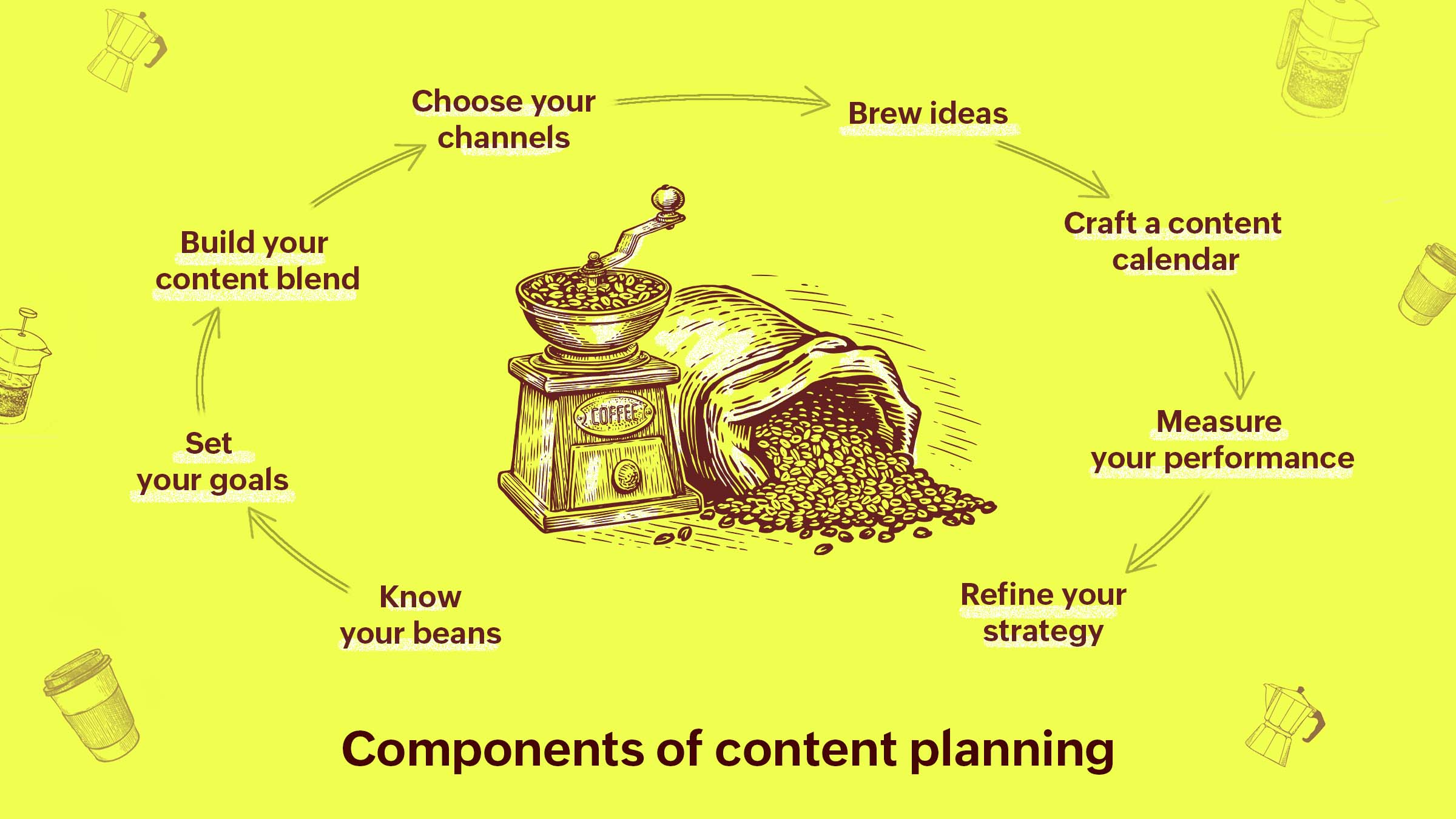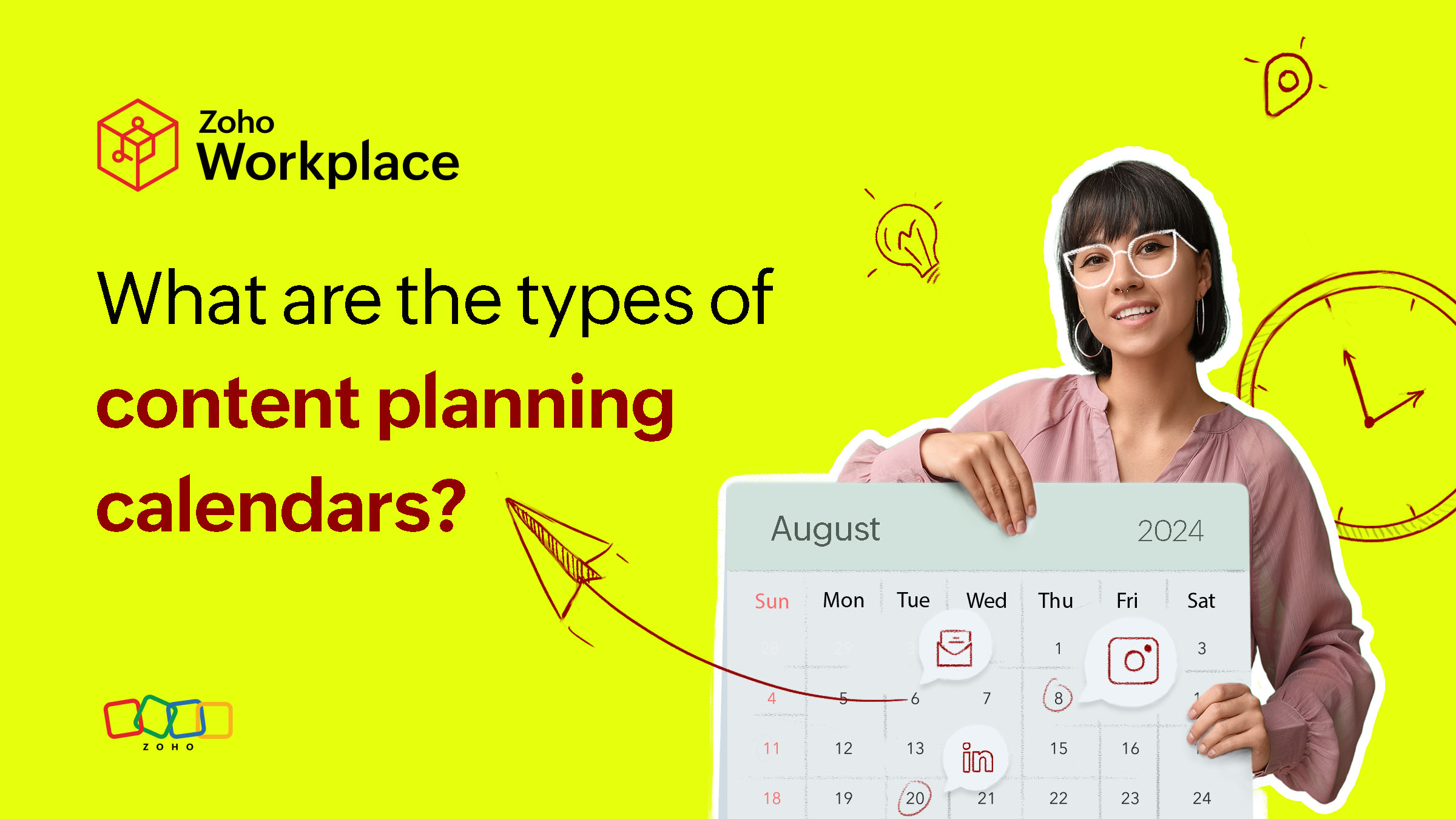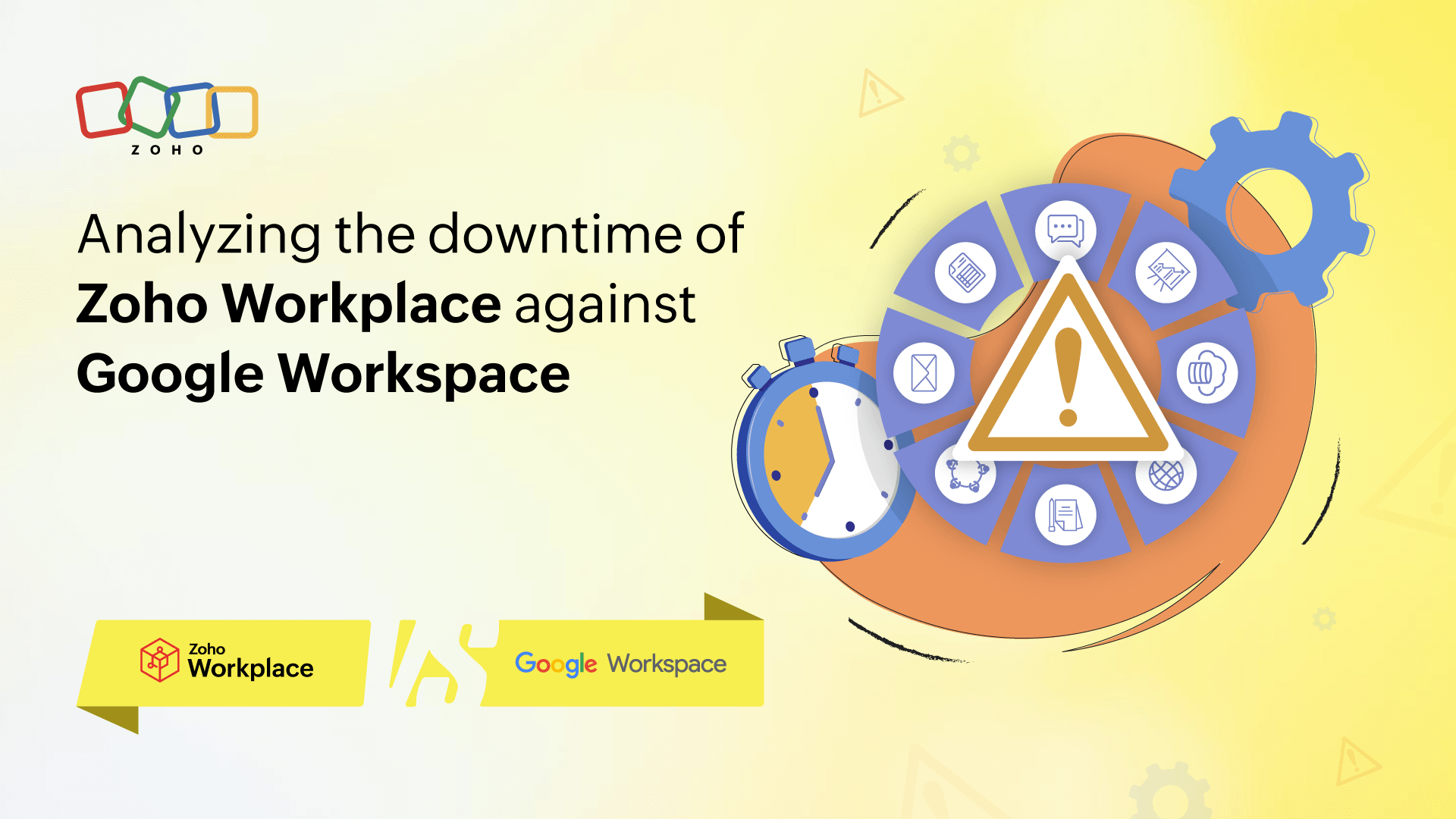- HOME
- All Products
- Calendar
- What are the components of content planning?
What are the components of content planning?
- Published : June 25, 2024
- Last Updated : October 17, 2024
- 510 Views
- 7 Min Read
Imagine you own a new coffee brand, Bold Bean. You’ve poured your heart and soul (and quite a bit of money) into opening up a store. But expecting customers to walk right in to grab a cup of joe is a pipe dream. In today's digital age, just the aroma isn't enough. To truly thrive, you need to brew up a strong online presence.
Creating engaging content allows you to connect beyond the walls of your cafe. By making that content relevant to your brand and audience, you can bring in new customers. You can also build brand loyalty and establish yourself in your niche.

A quick recap
In our previous blog post, we explored content strategy (the "why" behind your content) and content planning (the "how" and "when"). We highlighted why a digital content planner is important to any business. It helps you get in tune with your goals. You can put out meaningful content and connect with your audience.
Now, let's delve deeper and unpack the essential components that make a content plan from the ground up.
Components of content planning
Content planning isn't about churning out blogs or social media with endless puns (although, a good pun never hurts). It gives you a roadmap to ensure your content reaches the right audience, at the right time, through the right mediums. Here are the essential components to include when crafting a content planner.
1. Know your beans, understand your audience
Before you start brewing content, it's vital to understand who you're brewing it for. Is it for working professionals who need a caffeine boost? Is it for students needing a late-night study? Or is it for writers awaiting inspiration on a blank page?
Develop a detailed profile of your ideal customer. This includes their demographics, interests, preferences, how they like to take their coffee, and when. Use surveys, insights, emerging trends, and customer feedbacks to understand your audience.
Example: In this case, because you’re building a new coffee brand, your target audience might be young working professionals in the 25–40 age range. They have high disposable income, reside in metropolitan cities, and are looking for artisanal brews with unique flavors.
2. Set your goals
Now that you’ve defined your audience, you need to answer this: Where do you want your content to take you?
Vague goals like "get more customers" won't cut it. You need clear, actionable goals. If in doubt, use the SMART framework to set your goals.

Specific: Clearly define what you want to achieve, e.g., increase monthly website traffic.
Measurable: Quantify the goal to track progress. “10 new customers” works much better than “get more customers.”
Achievable: Ensure that the goal is realistic and attainable. “Increase sales via online store by 500%” is unrealistic (and dangerous for your customers).
Relevant: Align the goal with your values and priorities. Increasing website traffic aligns with the overall goal of increasing brand awareness.
Time-bound: Set a specific deadline. Otherwise, you'll find yourself with all the time in the world and nothing to show for it.
Example: Your goal is to increase social media engagement by 8% in the next 3 months. This is measurable and realistic.
3. Build your content blend
Sure, you could throw random content at the wall and see what sticks. But wouldn't it be more strategic to have a blend of content pillars that are carefully curated? Content pillars form the building blocks. Here's why they’re essential:
They keep things clear. They’re the big neon sign that says, "Hey, this is what we're all about!" It helps your audience know exactly what to expect from you.
They save time and effort. You spend less time brainstorming ideas and more time creating valuable content.
They serve up freshness. Content pillars keep things exciting by giving you a roadmap to explore new flavors and ideas. Your audience will never get bored!
They offer variety. They give you room to play. Whether you're sharing behind-the-scenes stories or quirky coffee hacks, there's something for everyone.
Example: For Bold Bean, your content pillars could include posts about cool brewing techniques, stories behind your unique coffee blends, tips on eco-friendly packaging, and fun DIY coffee recipes.
4. Choose your channels
Alright, you've decided on the content pillars, but now it's time to decide how to serve it to your audience. Here's why picking the right distribution channel matters:
Reach the right crowd. Selecting the right distribution channels ensures that your content reaches the people who will love it the most.
Tailor your message. Each channel has its own vibe—whether it's the casual chatter of social media or the more formal setting of an email newsletter. By picking the right channels, you can serve up your content in a way that resonates with your audience.
Make the most of each platform. Different channels are suited to different types of content. By picking the right one, you’ll ensure that your message strikes a chord.
You can begin by asking yourself these questions: "Where does my target audience hang out? What type of content do they consume?" Decide your distribution channels based on those answers.
Example: Short reels about your roasting process and vibrant flavor profiles on Instagram can reach Bold Bean's young audience. Don't just sell coffee, but curate a lifestyle through podcasts on brewing tips, or even the origins of your coffee beans, for commuters.
5. Brew ideas
It’s time to put the “creative department” to work! Engage your gray matter cells and start brainstorming ideas. Follow these steps:
Review everything from audience insights, content pillars and formats, and distribution channels.
Grab a whiteboard, plain paper, or a laptop (whatever works for you!) and come up with content ideas.
Sift through ideas to see if they align with your interests, personality, and goals.
6. Craft a content calendar
An effective content calendar (also known as an editorial calendar) outlines what content you'll create, when you'll publish it, and where it will appear. It outlines deadlines for different stages (e.g., first draft, edits, visuals), content formats, and who's responsible for each stage. This allows you to plan promotions and ensure that everything runs smoothly. Without a calendar, there's no plan and no direction—you’re just praying for inspiration that never seems to come.
Here are the most common elements to include in your content calendar:
Subject title: A clear, concise title. For example: The Bold Bean Blends: Create your signature coffee drinks.
Deadlines and dates (from first draft to published post): Due dates ensure that content creation stays on track. For example: First draft–July 25, 2024; Published post–August 1, 2024
Content type: The type of content, such as a blog post, social media post, video, infographic, or email newsletter. For example: Video content on “The Bold Bean Blends.”
Content channels: Platforms where the content will be published or distributed.
For example: A reel on Instagram.Assigned to: The person or team responsible for creating, editing, or publishing the content. For example: The marketing team.
Links (content, creatives): It provides easy access to the content itself and related creative assets. For example: Content Draft - <Link>, Creatives - <Link>.
Status: The current stage of the content creation process. It shows if the content is in progress, under review, completed, or scheduled for publication. For example: Published.
Notes/comments: This section allows for additional comments, instructions, or notes. For example: Add a swipe-up link leading to your website.
7. Measure your performance
You've now put your content out into the wild, but is it hitting the mark? That's where measuring performance becomes your best friend. You can track clicks, shares, and more to find what's working and what's not. It's the direct line to your audience.
Here are some of the metrics you can measure:
Reach metrics (impressions, clicks, views)
Conversion metrics (leads generated, sales)
Website traffic metrics (sessions, bounce rates, time on page)
Social media metrics (followers, engagement rates, reach)
Email marketing metrics (open rates, click-through rates, conversion rates)
Example: A high click-through rate (CTR) indicates that people are clicking on links within your content. This shows they're engaged and want to learn more. Make more content along these lines!
8. Refine your strategy
But what good are all of these analytics if you don’t do anything with them? Let's talk strategy. What are the numbers trying to tell you? What's lighting up your audience? What type of content is a hit, and what seems like a miss? These questions help you tweak your strategy.
Example: Engagement with your Bold Bean DIY recipes is rising. So, put out new and creative coffee recipes on your social media handles.

Questions to ask yourself
When creating a content plan, here are some of the questions to think about.
Who is your target audience?
What are your specific goals for your content?
What type of content resonates most with your audience?
Which distribution channels are most effective to reach your audience?
What are the key themes or topics to focus on?
How often should you publish new content?
Who will be responsible for the content?
What should your content schedule look like?
How will you measure your content’s performance?
How will you refine your strategy based on metrics?
Wrapping up
We've just spilled the content tea (or should we say, beans?). The key components of content planning are knowing your audience, setting goals, picking the right platforms, and brainstorming ideas. But content planning doesn’t end here! In our next blog post, we'll take a look at the types of online content planners with some free bonus templates! Stay tuned!
 Srinath Vijayakumar
Srinath VijayakumarSrinath is a product marketer for Zoho Workplace. He talks about productivity, tips to improve communication, and nuggets on doing your best at your workplace. He has great interest in bringing a fresh perspective to the forefront. He is highly optimistic to the extent that he opens the refrigerator every 10 minutes, hoping to find something new. Outside of work, you will catch him playing football, travelling or writing half-finished stories.










